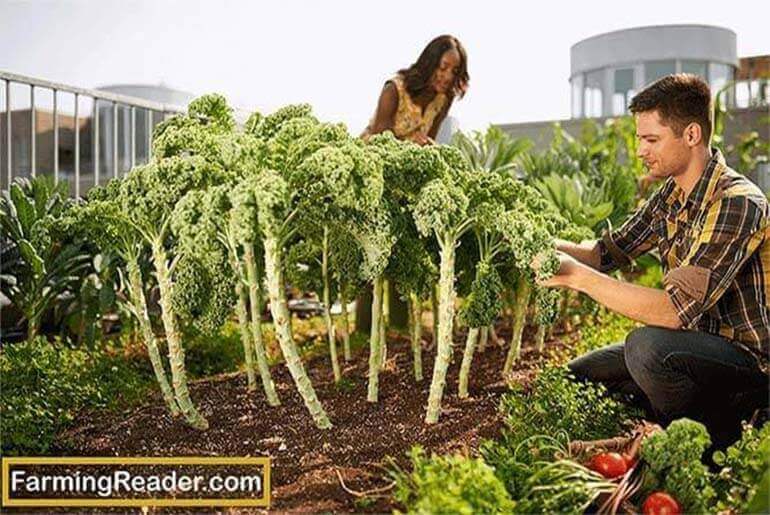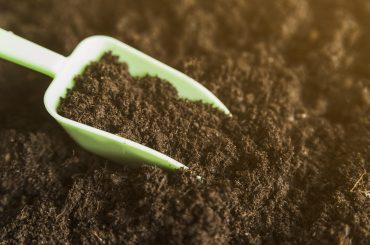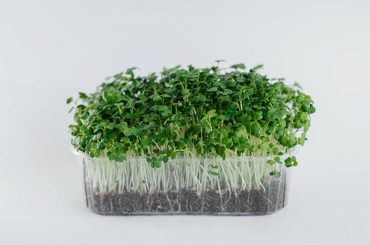Nobody wants to suffer from any diseases. But people are victims of chronic diseases easily for many reasons. Using harmful pesticides and chemicals in crops is one of the main reasons for attacking diseases. In city life, it is quite more tough to get organic foods and vegetables, and that reason organic rooftop vegetable garden can give you a better solution to keep in healthy.
From ancient times, People are being followed by organic farming. In the early 1900s, the newly developed organic farming concept was introduced by Sir Albert Howard, F. H King, Rudolf Steiner, and others where they used biologically pest controls, compost of animal manures, crop rotation, and cover crops in the organic farming process.
When farmers cultivate crops by using kitchen waste, animal and farm wastes, aquatic waste, humus, manure or compost, and other biological materials are called organic farming. Besides rising organic farming day by day, the popularity of setup organic Rooftop Vegetable Garden is also increasing.
What is Rooftop Vegetable Garden?
Pope Pius II in Pienza, Italy, in 1463 first designed landscapes of a rooftop garden. The cultivation of food on the rooftop of buildings is called rooftop gardening. When urban farmers use organic fertilizer like kitchen waste, animal manure or compost, and biologically pest controls to cultivate foods on the rooftop, is referred to as rooftop organic gardening. Green roofs, hydroponics, aeroponics, or container gardens are used for rooftop gardening. Hydroponics technique is the most effective form to build a greenhouse. As urban areas don’t have adequate space for farms, the latest technologies are incorporated and a transformation has occurred from traditional large-scale agriculture to smaller.
Why We Need More Organic Rooftop Vegetable Garden?
The world is inhabited by a total of 8 billion people where is the big burning question raising about foods. Alongside this, people are making multi-stored buildings by cutting down trees. According to “ourworldindata” report about land use on agriculture is only 51 million kilometer square, where 77 percent (40 million km square) of the lands used for livestock, meat, dairy and the rest of the 23 percent (11 million km square) lands use for crops. So, the land crisis for Agriculture is becoming a large issue in near future. For that, there is no other alternative option without organic Rooftop vegetable garden. Besides, organic farming is a matter for health-conscious people for maintaining good health in an urban area.
Effective use of space
According to American Rivers, there are over 4.85 trillion sq ft of roof space in areas with populations above 50,000 people in the United States and only 1% is utilizing. However, urban agriculture has been increasing by 25% every year since 2010.
Remove Air Pollution
You know, the amount of carbon dioxide is much greater in urban areas compared to rural areas. Vehicles, bus, motor, bike, industry, and more emit CO2. Polluted particles, gases, and smog make the urban unworthy to live.
Carbon dioxide is harmful to the ozone layer and our environment. Plants are the only elements that absorb CO2 through the photosynthesis process. Our life completely depends on plants. So, it is necessary to make your city green asap.
To minimize noise
The intensity of sound in the city is more. Sound causes many diseases. The human can tolerate the 70-decibels intensity of sound. Do you know how much sound is present on an urban rooftop than a rural?
According to Engineering Toolbox, the audible sound levels in rural areas are about 30-40 dBA whereas in urban areas the average sound level is about 85-90 dBA.
Plants absorb and reflect sound waves. Help to reduce sound pollution by providing low-frequency sounds. Busy cities that are situated near the airports or underneath flight paths must need to increase the number of plants for decreasing sound pollution.
To reduce waste kitchen
Waste is one of the main reasons for pollution. There is not enough technology that can convert this waste into useful material. As a result, they spread bad smells and makes air polluted.
You can use this garbage to make organic fertilizer. Then use this fertilizer in your garden. This will save you money, and keep your air healthy.
Refreshes Rough City
By losing nature cities have turned into a desert. Rooftop gardening is the only way to make your city liveliness.
Rooftop Organic Gardening Vegetable List
Before seeing the Rooftop organic vegetable name, let’s overlook at a glance at a survey of organic farming.
According to IFOAM-Organics International at BIOFACH, the world’s leading trade fair for organic food, in Nuremberg, Germany reports that there are a total of 2.9 million organic producers around the world, and growing by 5 % per year since 2016!
In 2017, FiBL reported that 181 countries produce and sell organic foods.
In 2018, the Research Institute of Organic Agriculture reported, countries that have the most organic land, including Australia (97% of this is grazing area), Argentina, China, and the United States.
In 2018, organic food sales in the United States are 47.9 billion U.S. dollars. The sales values in Europe are 29.8 billion euros in 2015 and the growth rate is increasing over the years.
The Nielsen Company conducted a survey that is released by the Organic Trade Association (OTA) more than 100,000 households had bought organic foods recently. In the U.S four-in-ten eat organic foods.
We can grow any vegetables by using organic farming. But most profitable and popular Rooftop based organic vegetables are listed here:
- Tomatoes, Peas, Okra, Zucchini
- Spinach, Greens, Lettuce, Swiss chard
- Herbs, Kale & Kohlrabi, Leeks
- Beans, Onions, Potatoes, Eggplant, Beets
- Broccoli, Cauliflower, Cabbage
- Cucumbers, Melons, Watermelons, Squash & Pumpkins
- Turnips & Rutabagas, Carrots, Parsnips, Radishes
Importance of Organic Vegetable Garden
Many people suffer from liver disease. The conventional cultivation process uses chemicals, and 90% of liver disease happens due to these chemicals.
Organic farming discourages herbicides and pesticide use. It focuses on the use of natural ways.
The advantages of natural organic farming are endless. Some of them are included as follows:
- Huge benefits for the farmers, consumers, and the environment.
- Organic farming keeps farmers healthy and safe from noxious chemicals.
- Keeps the consumers healthy and risk-free. So, the local demand for organic farming is high.
- Organic foods are healthy and safe. Chemicals and pesticides are so much pernicious to the human body.
- Organic farming foods contain 50% more nutrients and vitamins than other methods.
- Keep the nearby environment safe, pollution-free, and save beneficial insects.
- Demandable method.
- In the future, this method will be the next era of agriculture.
In 2016, more than 82% of American consumers bought certified organic foods, and the number of consumers is increasing by 3.4% each year.
An Organic system plan in Rooftop Gardening
An organic system plan (OSP) is a certified plan of practices and procedures used to produce organic goods or handling operations. The OSP must be sufficiently detailed so that the certifier can get a clear picture of the farm’s crops, harvest, sales, recordkeeping, soil-building practices, seed planting, pest control, management process, protection, and any other elements related to organic production.
The main purpose of this streamlined template is to develop organic system plans for highly diversified farms and develop customized templates for potential producers and also provide a recognized starting point for newly accredited certifiers. A complete organic system plan produces according to the National Organic Program (NOP).
Requirements of an Organic System Plan in Organic Rooftop Vegetable Garden
The organic system plan (OSP) must be enacted, negotiated, and amended between certifying agent, and producer, or handler. The organic system plan must be responsive to the unique characteristics of each operation, and must meet the requirements for organic production and handling system plan. An organic production or handling system plans that must include:
Monitoring Techniques
The monitoring technique is the third element of the organic system plan. This part is designed to verify that the plan is effectively implemented. Methods are described elaborately
Record Keeping
The description of the recordkeeping system is the fourth element of the organic system plan. This system fully discloses all the activities in detail and in a format that can be readily understood, audited, and available for inspection.
Many new applicants don’t know what documents are needed to record. Records must be related to operating procedures. Records that are needed to keep, including the process involved in the production, facilities that get during production, handling, marketing, storage, and transportation.
Organic Crop Producer Records
Records are maintained by the certified farm, handler, or processor to demonstrate compliance with the NOP rules. These records must be listed in the organic system plan.
Seeds and Planting Stock Practice Standard
The organic system plan requires the use of organic seeds, annual seedlings and planting stock. This is the general rule. If organic variety is not commercially available, then the grower is allowed to use non-organic seed, annual seedlings, and planting stock.
Split Production Records
If an organic farm grows the same crop organically and conventionally, the inspector will keep notes of all harvest, storage, and sales records for both the organic and conventional crops.
This is necessary to ensure that no mixture occurs between organic and non-organic crops.
Sources for Organic Record keeping Materials
Organic recordkeeping materials are available for organic growers. National Sustainable Agriculture Information Service (ATTRA) provides a set of documentation forms to help producers of organic crops and livestock. This documentation form is used to record their on-farm practices and production activities.
Management of Split Operations
This is the fifth element and must be included in an organic system plan. This provision requires an adequate management system, split production, or handling operations.
Buffer Zones
There are no regulations for a buffer zone, but buffers must be sufficient to prevent contamination. It is the farmer’s responsibility to assess the risks. They should take appropriate measures to minimize contamination.
Setup Conditions for Organic Rooftop Vegetable Garden
A sufficient amount of space on the top of the roof is compulsory.
- Need an adequate amount of sunlight. Intense sunlight is dangerous for plants. To avoid direct sunlight tin shade cloth or net around the crop can be used. Shade and net can block approximately 35% intensity of sunlight. Allows 65% of light to flow through, which the vegetables need.
- Generally, plants require fertile and slightly acidic (optical range between 5.5 and 7.5) soil.
- Make sure enough water retention of the soil. Depending on the season water the plants once a day or once in two days.
- Organic nutrients should be given once in 7-10 days for keeping the plant healthy.
- Ensure protection against adverse weather, pest, and insect attack.
- Use plastic, fiberglass, or foam planting containers.
- Depending on the crops grown require 12 inches depth.
Plantation Process of Organic Rooftop Vegetable Garden
Organic farming is an eco-friendly and pollution-free method that increases sustainable production. This process is applied to release nutrients to the crops. Production of high nutritional value is the aim of organic farming. The process of rooftop organic farming is described below:
1. Select the Roof Full of Light and Air
At first, select the best suitable place that gets at least 6 hours of sunlight in a day. A good rooftop reduces the excess need for water and amendment.
2. Know Your Soil Fertility
Test your soil. Verify the soil type whether it would be beneficial or not for your chosen vegetables. Check your soil fertility and assess how much fertile your soil is!
Soil fertility is the ability of soil to produce crops and plants. Tilth is a physical condition of the soil. Good tilth means that the soil is not compacted and loose. The more tilth the soil, the more fertile the soil will be.
The loose soil holds a large amount of water. Air and soil organisms penetrate the plant roots easily, as well as plant roots reach deeper through loose soil.
3. Prepare Your Soil
Measure pH levels. Plants grow well in acidic soil. Optimum pH for plants between 5.5 to7.0. If your soil is too acidic (below 5.5) or alkaline (above 7.0), add dolomite or quick lime or organic matter, like peat moss or compost, respectively.
Reduce pests and pollutants from your soil. More than 20 nutrients are required for the proper growth of plants. After cultivating crops, the soil loses its nutrients and quality. Some nutrients, such as inorganic compounds are obtained primarily from the soil.
Essential nutrients you have to apply. Use 2 to 3 pounds of organic fertilizer for every 100 square feet of area.
You can make organic fertilizer by yourself. Use kitchen waste, fallen leaves, weeds, grass clippings, and old fruit or vegetable trimmings. Don’t use materials that contain fat, oil, meat, grease, feces, dairy, or wood chips.
Bacteria containing organic fertilizer make the soil nutrients more productive and increase the health of the soil. As a result, the soil becomes more fertile and enhances production.
4. Choose a Container for Harvesting
You can grow vegetables in pots, boxes, or buckets. Make 3 or 4 holes (½ inches each) on the bottom of the bucket for draining, and put a layer of sands to the bottom. Then, fill the bucket with prepared soil.
5. Choose Your Plants and Sow Seeds or Seedlings
Choose plants that you love to eat. Tomatoes, peppers, and squash grow all year-round. Carrots and corn grow only once a year.
Buy seeds that are neither genetically modified nor chemically treated. Organic farming doesn’t like genetic plants. It discourages engineered plants. It focuses on the use of natural ways. So, plant natural seeds or seedlings on your roof.
If you want to plant seedlings then buy that haven’t bloomed yet.
6. Take Care of Pests
Pests are a dangerous living thing that causes injury or disease to vegetables or crops. Sometimes they eat plant leaves and foliage. Both useful and harmful organisms present in the agricultural farm. Harmful organisms affect the fields and harm the soil or crops. To protect the soil and the crops, control the growth of such organisms.
Use organic fertilizer to control harmful pests and insects. Proper sanitization should maintain on the entire farm to control other organisms.
7. Water the Plant
Make the sure right amount of water. Under or over-watering can cause plant stress, often the reason for death. Water the plants in the evening or morning to slow evaporation and/or mulch to protect the soil. Organic material also helps to hold water and keeps soil alive.
8. Weed Management
Weed is an unwanted plant. They grow in agricultural fields and interrupt controlled plant production. Organic agriculture creates pressure to lower the number of weed instead of removing them completely.
Benefits of Organic Rooftop Vegetable Garden in City
Rooftop farming is an efficient farming practice. Rooftop farming not only fulfills the hobby of farming but also benefited people economically. There are several benefits of rooftop organic farming. These are:
Keep Home Cool
Plants help to reduce the temperature. The University of Cardiff reports that the buildings that have a garden, the temperature of the buildings remain 4-5 degrees less compared to buildings that do not have a garden.
Effective Use of Rainwater
In summer, urban roofs can retain up to 80% of rainfall while in winter this can be up to 40%. This water retention capability is a huge advantage for producing the crop and increasing production.
Effective Use of Household Waste
Household garbage is one of the main reasons for the contamination of the city area. By using household garbage you can produce organic fertilizer and can use it in your rooftop garden. I think you have understood the benefits of rooftop farming.
Urban People Health and Environment
Organic Rooftop Vegetable Garden has an immense effect on your health. It improves the air quality around your house and provides fresh air. Public parks and urban green areas are overcrowded. If you have a rooftop garden, you can interact with nature more easily.
A study by the University of Exeter Medical School, people who live near green areas have better mental and physical health.
Cultivate Favorite Vegetables
On the rooftop, people can grow vegetables based on their choice.
Time-saving
Rooftop gardening saves time. You need not go to fields for planting. You can use your free time. Thus, this saves time.
The Disadvantage of Organic Rooftop Vegetable Garden
There are two sides to the proverbial coin, it is with everything. Instead of a lot of advantages, rooftop organic farming also some disadvantages, include:
Expensive
Organic Rooftop Vegetable Garden is cost-effective. Because it requires many extra types of equipment, including buckets, pots, etc. If your roof doesn’t have a water supply system, you have to manage it that causes extra money or you need to provide from your indoor room that will be very tedious.
Leakage Can Occur
Extra weight can be dangerous for your roof. Instruments, like nails, screws, and tools may cause leakage to your roof.
Tedious feeling
Organic Rooftop Vegetable Garden requires lots of caring like traditional gardening. You need to control pests, water the plant that may cause your tediousness.
Final thought
Organic Rooftop Vegetable Gardens are mostly found in urban areas. Nowadays, people are becoming more interested in rooftop farming. As it has large numbers of benefits, we should practice more to make our city greener.





